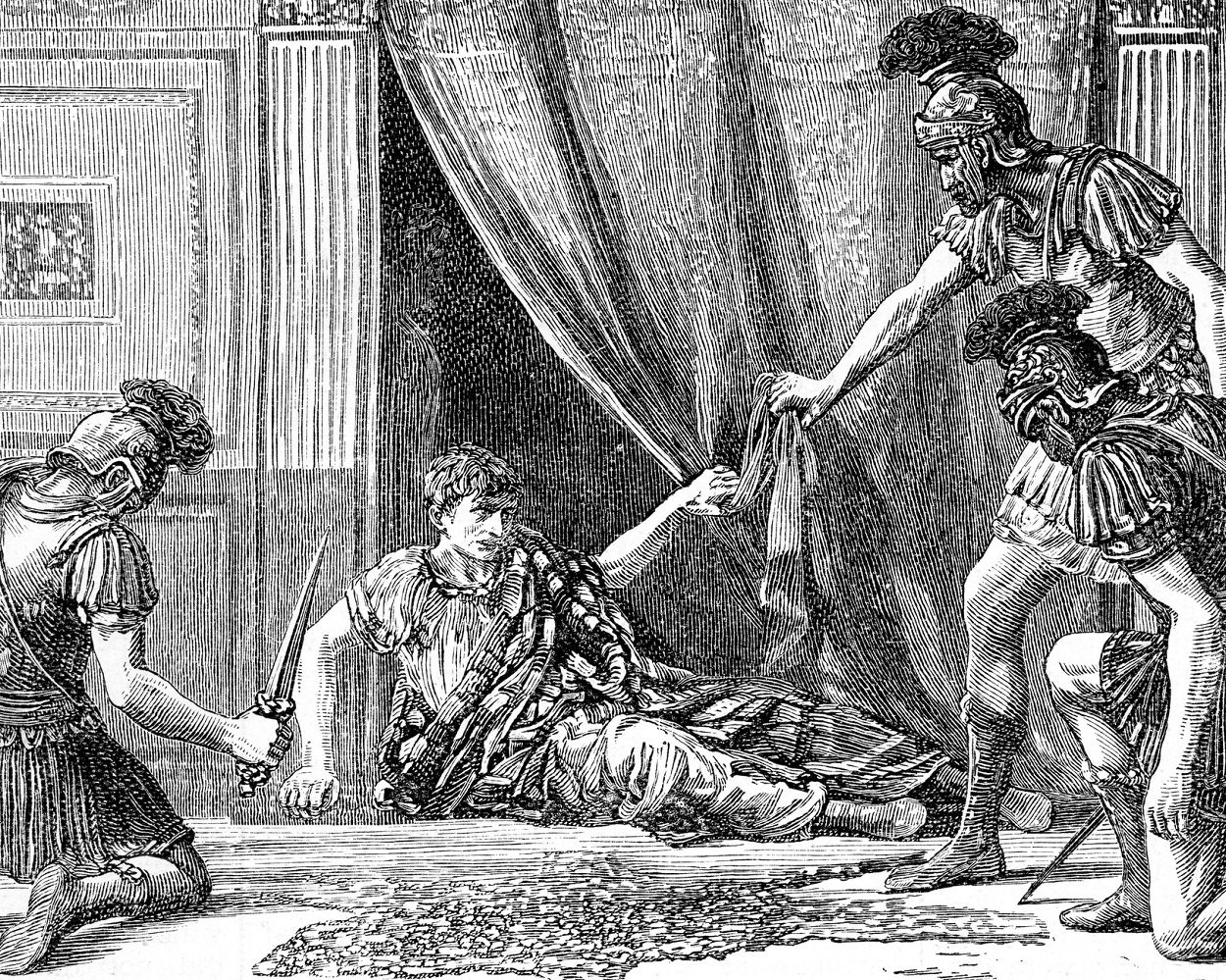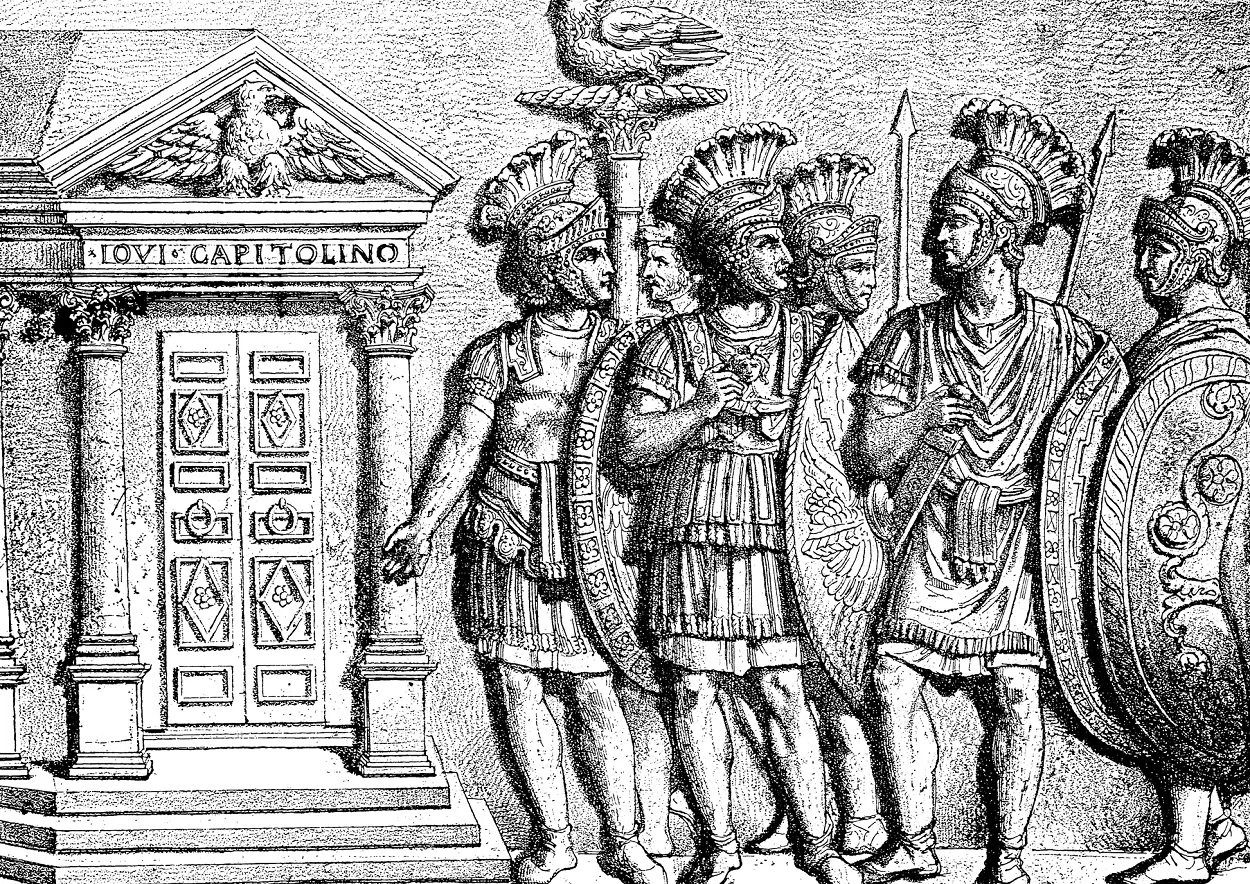The Praetorian Guard were an elite unit within the Imperial army, serving primarily as personal protectors and intelligence operatives for the Roman emperors.
The roots of the guard can be found during the Roman Republic, when soldiers served as protectors for Roman generals and important figures, or as elite guards for military praetors.
High-ranked generals with imperium held public office by serving as a magistrate or promagistrate. They were assigned a civil servant, lictors, to serve as an attendant and bodyguard. Where no personal bodyguard was assigned, senior field officers safeguarded themselves with temporary bodyguard units of selected soldiers.
Around 40 BC, Octavian, who would later become Emperor Caesar Augustus, installed praetorians within the pomerium (a religious boundary around the city of Rome), the first example of troops being permanently garrisoned in Rome proper.
Members of the guard accompanied Augustus on active campaigns, protecting the civic administrations and rule of law. At camp, the cohors praetoria (a cohort of praetorians guarding the commander), were posted near the praetorium, the tent of the commander, which the guard is believed to be named after.
After the construction of Rome’s Praetorian camp known as the Castra Praetoria around 23 BC, their role extended to escorting the emperor and the members of the imperial family, and to serve as a policing force during times of riot.
According to the Roman historian and politician, Tacitus, the guard around this time numbered nine Praetorian cohorts (4500 men, the equivalent of a legion), however, an inscription from near the end of Augustus’s rule suggests that their numbers were briefly increased to twelve.
The Praetorian Guard, like all legionaries, shared similar insignia, mainly on their shields. Praetorian Guard shields included wings and thunderbolts, referring to Jupiter, and also uniquely included scorpions, stars and crescents.
The first military engagement of the Praetorian Guard took place during the mutinies of Pannonia and the mutinies of Germania. Drusus Julius Caesar, son of Tiberius, accompanied by two Praetorian cohorts, the Praetorian Cavalry, and Imperial German Bodyguards, suppressed the mutinies of Pannonia. Germanicus, later known as Germanicus Julius Caesar, led a force of legions and detachments of the Praetorian Guard in a two-year campaign in Germania against the uprising.

In the three centuries that followed, the guard influenced imperial politics by overthrowing emperors and proclaiming the successor. Members of the guard were also directly involved in the assassination of emperors, such as: Aurelian, Balbinus, Caligula, Caracalla, Commodus, Elagabalus, Galba, Pupienus, Pertinax, Philip II, and Probus.
In AD 305, Diocletian and Maximian abdicated, and the former Caesares, Constantius and Galerius became Augusti. Although two sons of emperors, Constantine I and Maxentius were eligible, they were passed over for a new tetrarchy, and Valerius Severus and Maximinus Daza were appointed Caesars.
Severus planned to disband the Praetorian Guard on the orders of Galerius, resulting in the guard giving their allegiance to Maxentius and proclaiming him emperor. By AD 312, Constantine I marched on Rome with a force of 40,000 soldiers to eliminate Maxentius, facing off against an army that encompassed the bulk of the Praetorian Guard garrisoned in Rome at the Battle of the Milvian Bridge on the River Tiber.
Contemporary accounts record Maxentius’s forces being pushed back against the river and retreating across the bridge. The weight of soldiers fleeing caused the bridge to collapse, stranding elements of the guard on the northern bank of the river who were either killed or taken prisoner.
Lucius Caecilius Firmianus, a Christian author and advisor to Constantine recorded the events: “The bridge in his rear was broken down. At sight of that the battle grew hotter. The hand of the Lord prevailed, and the forces of Maxentius were routed. He fled towards the broken bridge; but the multitude pressing on him, he was driven headlong into the Tiber [drowned].”
Maxentius’ body was fished out of the Tiber and decapitated, and his head was paraded through the streets of Rome. Supporters of Maxentius were eliminated and the Praetorian Guard and Imperial Horse Guard were disbanded. The remaining guard were sent in exile to the corners of the empire, and the Castra Praetoria was dismantled in a grand gesture that marked the end of the Praetorians.
Header Image Credit : Shutterstock





